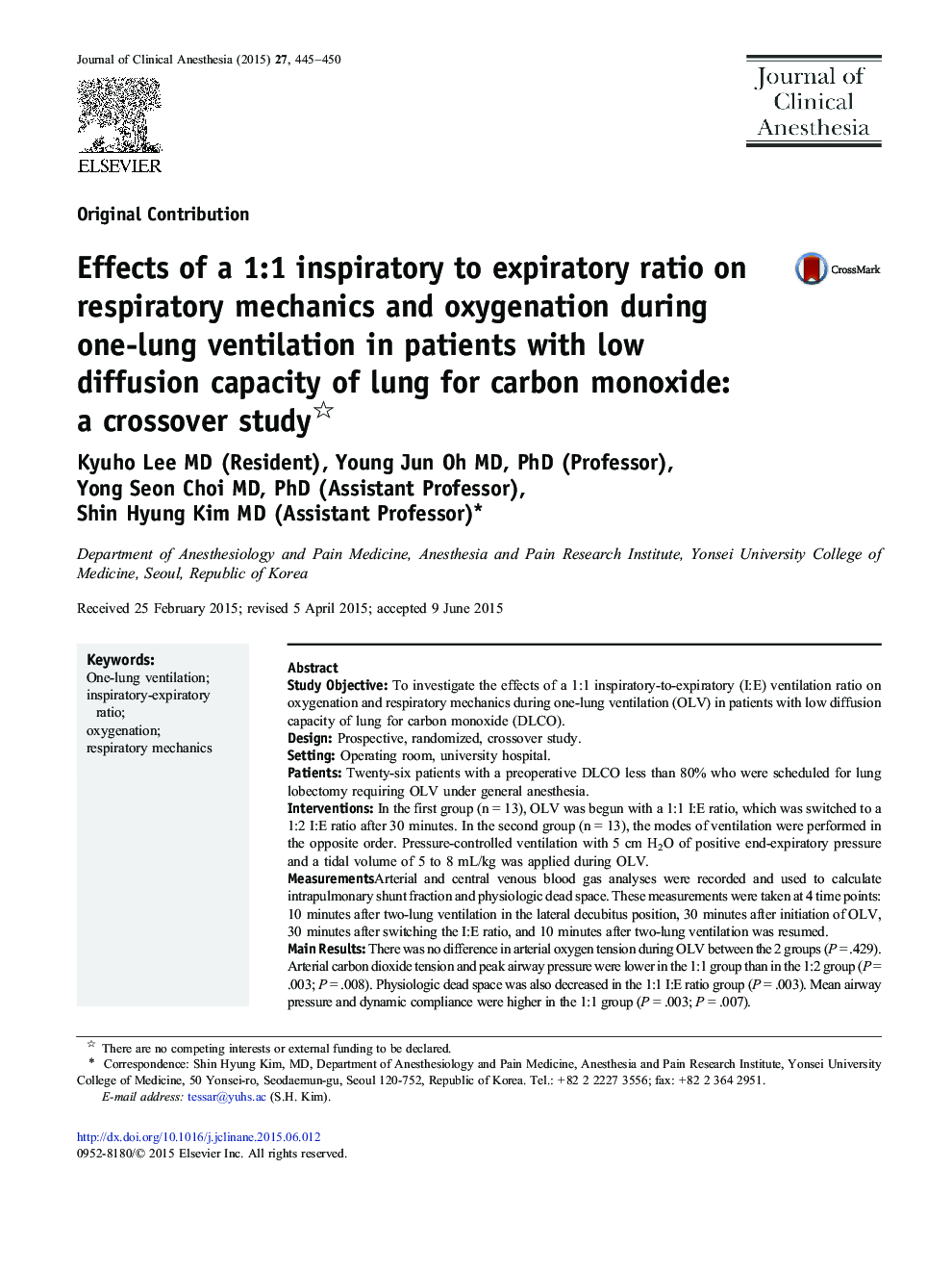| Article ID | Journal | Published Year | Pages | File Type |
|---|---|---|---|---|
| 2762218 | Journal of Clinical Anesthesia | 2015 | 6 Pages |
•Hypoxemia is frequently induced during 1-lung ventilation (OLV).•We compared oxygenation during OLV between different I:E ratio groups.•Pressure-controlled ventilation (PCV) with an I:E ratio of 1:1 during OLV does not improve oxygenation.•PCV with an I:E ratio of 1:1 during OLV improves dynamic compliance.•PCV with an I:E ratio of 1:1 during OLV reduces physiological dead space.
Study ObjectiveTo investigate the effects of a 1:1 inspiratory-to-expiratory (I:E) ventilation ratio on oxygenation and respiratory mechanics during one-lung ventilation (OLV) in patients with low diffusion capacity of lung for carbon monoxide (DLCO).DesignProspective, randomized, crossover study.SettingOperating room, university hospital.PatientsTwenty-six patients with a preoperative DLCO less than 80% who were scheduled for lung lobectomy requiring OLV under general anesthesia.InterventionsIn the first group (n = 13), OLV was begun with a 1:1 I:E ratio, which was switched to a 1:2 I:E ratio after 30 minutes. In the second group (n = 13), the modes of ventilation were performed in the opposite order. Pressure-controlled ventilation with 5 cm H2O of positive end-expiratory pressure and a tidal volume of 5 to 8 mL/kg was applied during OLV.MeasurementsArterial and central venous blood gas analyses were recorded and used to calculate intrapulmonary shunt fraction and physiologic dead space. These measurements were taken at 4 time points: 10 minutes after two-lung ventilation in the lateral decubitus position, 30 minutes after initiation of OLV, 30 minutes after switching the I:E ratio, and 10 minutes after two-lung ventilation was resumed.Main ResultsThere was no difference in arterial oxygen tension during OLV between the 2 groups (P = .429). Arterial carbon dioxide tension and peak airway pressure were lower in the 1:1 group than in the 1:2 group (P = .003; P = .008). Physiologic dead space was also decreased in the 1:1 I:E ratio group (P = .003). Mean airway pressure and dynamic compliance were higher in the 1:1 group (P = .003; P = .007).ConclusionsPressure-controlled ventilation with a 1:1 I:E ventilation ratio did not improve oxygenation in patients with low DLCO during OLV compared with a 1:2 I:E ventilation ratio. However, it did provide benefits in terms of respiratory mechanics and increased the efficiency of alveolar ventilation during OLV.
